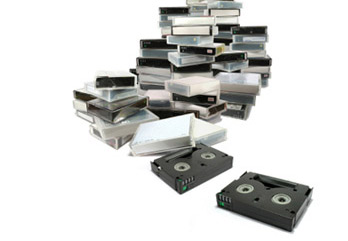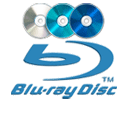At DVD Your Memories, we specialize in professional video conversion services designed to preserve your home videos and cherished memories. Whether you want to convert VHS to digital, transfer MiniDV to USB, or digitize old video tapes like Betamax or Hi8, our expert technicians handle every format with care and precision. We guide you through the technical landscape of video formats, ensuring your videos are converted to the right digital file—no matter if it’s AVI, MOV, H264, MPEG, or MTS—for easy viewing, sharing, and long-term preservation.
Talk to our technicians about specific formats you may need and leave the details to us.

| DVD Your Memories | |
|---|---|
| Pricing (per file)* | $19.99 |
| *Above pricing applies to video tapes up to 2 hours, tapes exceeding that time are $10 per each additional 2 hours. | |
| High Definition | |
|---|---|
| Pricing (per file)* | $29.99 |
| *Above pricing applies to video tapes up to 2 hours, tapes exceeding that time are $10 per each additional 2 hours. | |

Get your brand new converted video hosted online for your friends, family and the WORLD to SEE! We can even help you create an account and upload your masterpiece. Please ask your editor for more information and pricing.

Have your converted video upgraded to Blu-ray and watch your footage in high definition video! Video must be converted to high definition video. Once converted we will transfer to our Blu-ray discs. For more information about our Blu-ray services, please visit our Blu-ray transfer page.
Sign up and receive a FREE
Media Organization Guide plus exclusive discounts with our monthly newsletter.
Professional video conversion ensures your home videos and legacy tapes are preserved with the highest accuracy and quality. This process safeguards your memories for the future while offering several important benefits:
A digital video file consists of two key parts: the container and the codec. The container is the file type extension you see, like .AVI, .mp4, or .MOV. It acts like a box that holds the video, audio, and metadata streams. Inside this box, the codec determines how the video and audio are compressed and decompressed during playback, which can affect how and where you play your file. There are fewer video file containers than codecs, and each container can have hundreds of codecs within it.
Most of the popular computer video software is actually preloaded with several of the most popular and most used codec and container decoders to properly playback popular file formats. Odd types of codecs may require downloading codec packs from external sources in order to play properly.
Video technology is complex, with hundreds of codecs and container combinations available. Some formats are designed for professional editing, others for web sharing, and some for archival purposes. While DVD Your Memories supports most popular video formats, there are extremely niche, proprietary, or licensed codecs we cannot convert. We encourage you to consult with our video technicians to identify the best formats for your project and if the format that you were thinking about is feasible.
Let’s explore some of the most common video file formats you’ll encounter when working with professional video conversion and digitization services. Each file extension—the last few letters after the dot in a filename—indicates the container type, similar to how .doc signals a Word document. For example, .mov stands for QuickTime Movie, and .wmv indicates Windows Media Video.
Understanding these formats will help you decide which is best for your project, whether you want to preserve home videos, convert VHS to digital, or prepare files for sharing and editing.
AVCHD was developed by Sony and Panasonic for high definition home theaters, using the .mts or .m2ts file extension, though it’s popular because of HD camcorders as well. Optimized for high-definition recording, the format preserves excellent detail, making it ideal for editing or archiving master-quality footage.
Some video editing software applications have begun to support this format but many of can not fully handle it quite yet. Additionally, playback of AVCHD files requires speedy CPUs and a sufficient amount of RAM. That alone makes this format more difficult to work with but, on the other hand, it maintains high quality.
AVI is one of the oldest and most widely recognized video container formats, developed by Microsoft. While it delivers excellent quality, AVI files can be extremely large especially when uncompressed, making them impractical for online sharing or casual viewing.
FLV was once a ubiquitous format for streaming video online, used heavily in platforms like YouTube before the rise of HTML5. Its small file size made it ideal for web streaming, but the end of support for Adobe Flash in 2020 and the major browsers blocking it afterward has rendered it largely outdated.
MPEG is a family of standards developed by the Moving Picture Experts Group for compressing audio and video. This international group was established in 1988 to develop standards for digital audio and video formats. However, they’re just one of many groups looking to standardize and develop new technologies for digital video.
Older MPEG formats, like MPEG-1 and MPEG-2, were widely used for DVDs and early web streaming but have been surpassed by newer technologies.
MP4 is one of the most widely used formats for video sharing, streaming, and device playback. Using H.264 or H.265 compression, it offers an excellent balance between file size and visual quality. This is the format that we recommend for online delivery of your media.
In fact, YouTube actually recommends that users upload using MP4 format. YouTube accepts multiple formats, and then converts them all to .flv or .mp4 in their back-end for distribution.
Developed by Microsoft, Windows Media Video (WMV) offers small file sizes and is optimized for Windows playback. However, its lower playback quality and limited compatibility outside of Windows have reduced its popularity.
Created by Apple, MOV is a high-quality video container format that works seamlessly with QuickTime and many professional editing programs. Originally an Apple only file format, with QuickTime expanding beyond Mac, MOV’s popularity has also expanded. While file sizes can be large, it’s a favorite for editing and archiving due to its quality and flexibility.
The vast majority of the videos we personally upload to the web are QuickTime format, followed by MPEG4.
If you see a video file on your computer labeled MSWMM, be aware that this is a Windows Movie Maker project file and not a video or movie file designed for sharing. MSWMM will only play within Movie Maker. When you want to save your movie to share it, use Movie Maker to convert it into a sharing format, such as .mpeg4 or .wmv.
The difference between sharing formats and project file formats confuses many people. No matter what video editing software you use, a project file is designed for working on within the editing program. You must convert the project file to watch it on any other player.
We provide high-quality digital conversion for a wide range of analog and digital tapes, including VHS, Hi8, MiniDV, Betamax, Digital8, and more, plus film formats like Super 8 and 8mm.
Conversion times vary depending on the length and number of tapes, but the typical turnaround is 1-3 weeks. Rush options may be available.
Yes! We offer basic editing such as noise reduction, color correction, and trimming. Custom editing services are also available.
Yes, our media digitization service ensures all original media are carefully returned to you along with the converted digital copies.
We use professional-grade playback machines and capture equipment, inspecting tapes for damage before conversion to preserve the best possible quality.
Your priceless family moments and once-in-a-lifetime events deserve the best possible care. Let our professional video conversion services protect and enhance your footage so it’s ready to enjoy for generations. Contact us today to start preserving your memories.